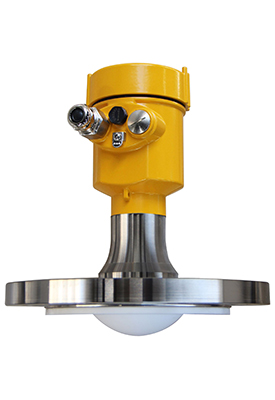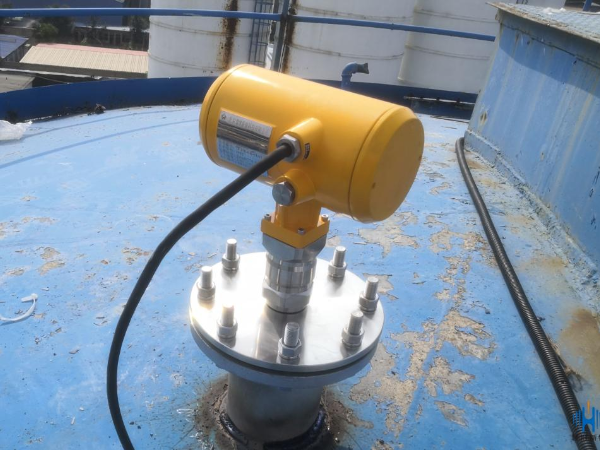The radar level meter is based on the time travel echo ranging principle and is used to measure the distance between the reference point and the material surface. The transmitting antenna transmits a microwave pulse signal to the measured target and the reflected microwave is received by the radar antenna.
The radar signal processor compares the transmitted signal with the received signal, calculates the measured distance, calculates the measured distance, and outputs the corresponding level value. The propagation signal of the radar level meter is an electromagnetic wave, which has strong penetrating power.
The propagation speed is less affected by dust, vapor, and medium, the propagation attenuation is small, and the temperature, pressure, and density of the material being measured hardly affect its measurement performance. It is with these advantages that it has been widely used.

Radar level meter has powerful, obvious advantages, but still that, again good instrument, but also need to be installed correctly, in order to effective and accurate measurement, the following are some radar level meter installation that needs to pay attention to the main points. First of all, in order to prevent the false signal reflected from the feed from affecting the measurement, the measurement point should avoid the inlet, solid material measurement should also avoid the outlet, the material at the outlet is not representative. The antenna should be installed perpendicular to the interface, and the distance from the tank wall should be greater than the emission angle beam area, but in order to prevent false echoes, it should also not be installed in the center of the arch-shaped tank

Avoid areas with very strong eddy currents, such as where there is agitation or very strong chemical reactions, bypass tube or waveguide tube installation should be used. Avoid vibration, high-pressure cleaning, and lateral load to prevent damage to the instrument. When using plus tube installation, the antenna axis should be perpendicular to the material surface; the antenna reaches the top of the tank long enough to ensure sufficient echo.
When needed, use an antenna extension tube, while increasing the diameter of the receiver to reduce the interference echo generated by the receiver. Bottom cone tank installation should pay attention to the antenna to align with the bottom of the tank, so that although it brings a certain error, but can achieve the complete measurement of the level, and can overcome the false echo caused by the cone-shaped bottom. Installation of wave-guide tube antenna.
The inner wall of the wave-guide tube should be smooth, and the open wave-guide tube below must reach the lowest liquid level in order to measure in the wave-guide tube. The axis of the opening of the waveguide tube is installed at 90 degrees to the polar sign of the radar to prevent the radar signal polarization from affecting the measurement.
When the dielectric constant of the measured medium is less than 4, it is necessary to install a reflection plate at the end of the wave-guide tube or make the end of the wave-guide tube into a bend to reflect and refract the interference at the bottom of the storage tank.

In many of our past cases, improper installation of the radar level meter has caused signal fluctuations, unstable measurement values, and large errors in measurement results. In a thousand words, the correct installation of radar level meters is an important guarantee for accurate measurement.
